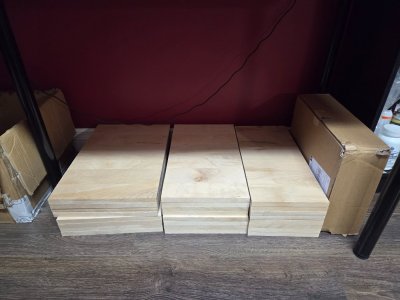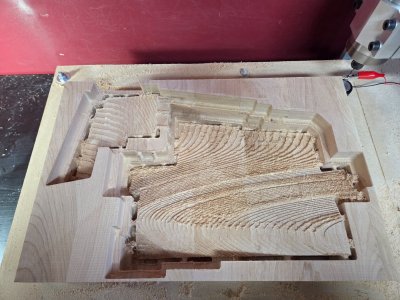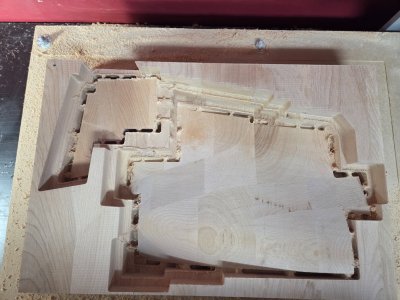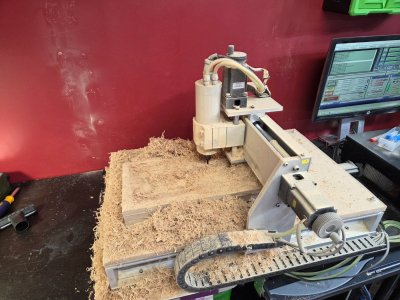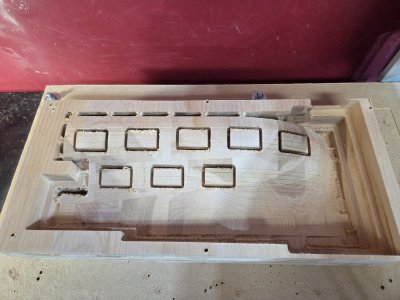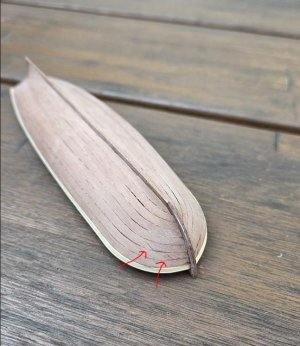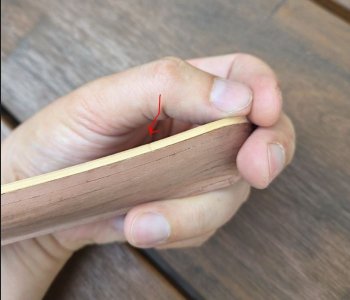This is what I'm currently at...
The above-water portion of the hull is split into 6 parts, 3 per side. These parts have a shape of a shell, which is machined outside and inside. The main idea is to have both surfaces 80-90% ready for the planking, both inside and outside. The outside surface has engraved markings for the whales, rails and other planks. The inside surface has grooves for installation of beam clamps and waterways. The openings for the gunports are rough and do not really provide any sills positioning, since the sills are positioned on the hull pywood frames. There's a lot of engineering in it, a lot of preparatory design, and I hope, a big potential for me in future. Of course, such design can be done only on CNC
It's the first time I'm trying such approach. It is very complex, there's a lot of difficulties to overcome. The current result is way below my quality expectations. However, I think that I will be able to use what I have now for this ship, and I will use the gained experience to significantly improve the result for future builds.
There's a lot of problems... First of all, I am disappointed with the wood choice. There's not much options, when you need blocks of this size. Any pricey small grain dence wood will bring the costs to thousands. On a cheaper side, if you go to a construction store you see plywood, pine and birch. Anything else seems to be too expensive. So I choose birch boards 3/4 in. thick and glued them to make 4 layers roughly 70mm thickness in total. This wood combines high toughness and fibrousness with incredible brittleness when fractured along the grain. You cannot work it with chisels or nife, but it gets cracked at the edges and easily breaks in parts. To my surprise, I dulled several bitts while milling these shells. But the main problem is that the mills constantly got pulled from the collet right in the middle of the work. This happens spontaneously and unexpectedly and as you can understand, completely ruins the whole work. The other major problem is that after the prolonged time of work, after 8-10 hours (and each of the 6 shells took about 20 hours to mill), Mach3 may at any point throw an error at you and loose the control of the machine. The machine at such moment just goes into free floating cutting a canyon through the part.
Another problem is fixing the blocks to the table. Since they are 70mm thick, honestly for now I have no idea how to fix them. So I simply glue them to my MDF table board. However, the glue doesn't have 0 thickness, and this contributes into the errors in the resulting shell thicknesses. And there's always a risk of the block coming off the table at some place, corner or side, since the MDF just flakes away.
The block can also deform during the milling, when a lot of material is removed from it and the internal strain redistributes.
There's a lot to improve also in the design itself of these shells and in the cam programs.
